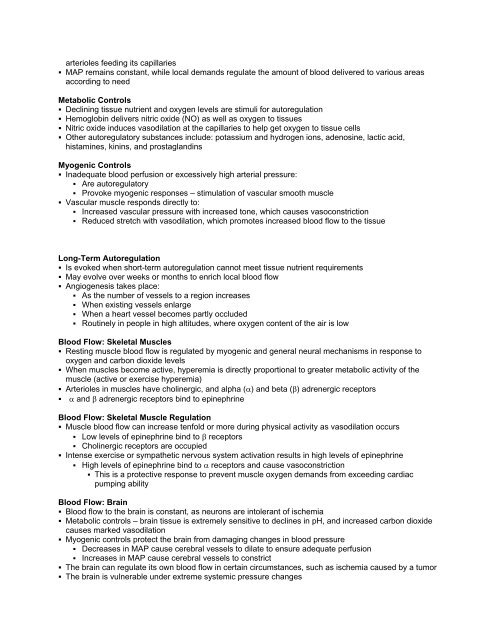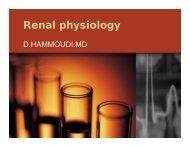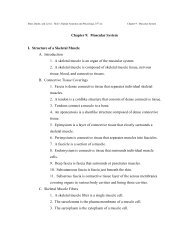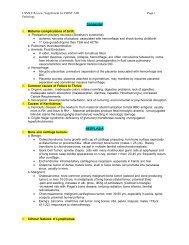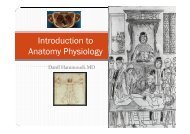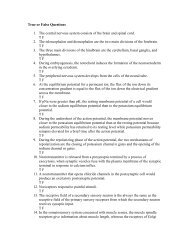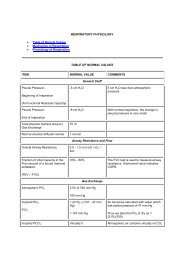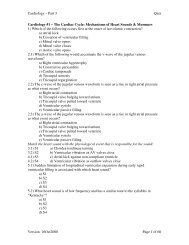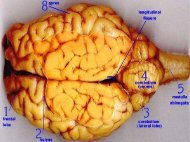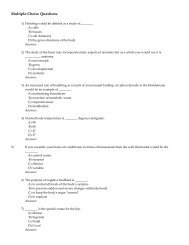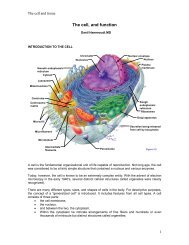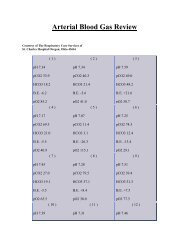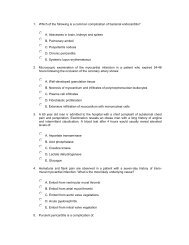Blood Vessels - Sinoe medical homepage.
Blood Vessels - Sinoe medical homepage.
Blood Vessels - Sinoe medical homepage.
You also want an ePaper? Increase the reach of your titles
YUMPU automatically turns print PDFs into web optimized ePapers that Google loves.
arterioles feeding its capillaries• MAP remains constant, while local demands regulate the amount of blood delivered to various areasaccording to needMetabolic Controls• Declining tissue nutrient and oxygen levels are stimuli for autoregulation• Hemoglobin delivers nitric oxide (NO) as well as oxygen to tissues• Nitric oxide induces vasodilation at the capillaries to help get oxygen to tissue cells• Other autoregulatory substances include: potassium and hydrogen ions, adenosine, lactic acid,histamines, kinins, and prostaglandinsMyogenic Controls• Inadequate blood perfusion or excessively high arterial pressure:• Are autoregulatory• Provoke myogenic responses – stimulation of vascular smooth muscle• Vascular muscle responds directly to:• Increased vascular pressure with increased tone, which causes vasoconstriction• Reduced stretch with vasodilation, which promotes increased blood flow to the tissueLong-Term Autoregulation• Is evoked when short-term autoregulation cannot meet tissue nutrient requirements• May evolve over weeks or months to enrich local blood flow• Angiogenesis takes place:• As the number of vessels to a region increases• When existing vessels enlarge• When a heart vessel becomes partly occluded• Routinely in people in high altitudes, where oxygen content of the air is low<strong>Blood</strong> Flow: Skeletal Muscles• Resting muscle blood flow is regulated by myogenic and general neural mechanisms in response tooxygen and carbon dioxide levels• When muscles become active, hyperemia is directly proportional to greater metabolic activity of themuscle (active or exercise hyperemia)• Arterioles in muscles have cholinergic, and alpha (α) and beta (β) adrenergic receptors• α and β adrenergic receptors bind to epinephrine<strong>Blood</strong> Flow: Skeletal Muscle Regulation• Muscle blood flow can increase tenfold or more during physical activity as vasodilation occurs• Low levels of epinephrine bind to β receptors• Cholinergic receptors are occupied• Intense exercise or sympathetic nervous system activation results in high levels of epinephrine• High levels of epinephrine bind to α receptors and cause vasoconstriction• This is a protective response to prevent muscle oxygen demands from exceeding cardiacpumping ability<strong>Blood</strong> Flow: Brain• <strong>Blood</strong> flow to the brain is constant, as neurons are intolerant of ischemia• Metabolic controls – brain tissue is extremely sensitive to declines in pH, and increased carbon dioxidecauses marked vasodilation• Myogenic controls protect the brain from damaging changes in blood pressure• Decreases in MAP cause cerebral vessels to dilate to ensure adequate perfusion• Increases in MAP cause cerebral vessels to constrict• The brain can regulate its own blood flow in certain circumstances, such as ischemia caused by a tumor• The brain is vulnerable under extreme systemic pressure changes


